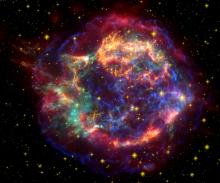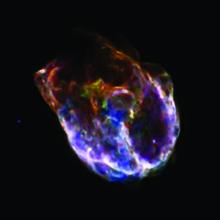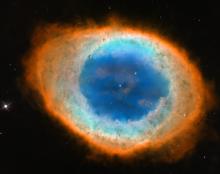Listen to today's episode of StarDate on the web the same day it airs in high-quality streaming audio without any extra ads or announcements. Choose a $8 one-month pass, or listen every day for a year for just $30.
You are here
Helium
Helium is the second-most-abundant element in the universe — only hydrogen is more common. It accounts for about a quarter of all the “normal” mass in the universe — the stuff that makes up stars, planets, and people.
Yet here on Earth, it’s quite rare. In fact, there’s a shortage of it. And that’s affecting everything from party balloons to rocket launches.
On Earth, helium is mainly mixed with natural gas. And because it’s lighter than air, if it reaches the atmosphere it’s likely to escape into space. So it takes special equipment and techniques to refine and store it.
Helium has many scientific uses. It fills the giant balloons that carry telescopes to high altitudes, and pressurizes the fuel tanks on rockets. In its liquid form, at a temperature just above absolute zero, it chills the superconducting magnets used in particle colliders. It also cools detectors on telescopes. And it’s a critical resource for many experiments in chemistry and physics.
The United States has been the world’s leading helium producer for decades. But supplies have been dwindling. And the federal government is selling off a major helium reserve it’s held in the Texas panhandle. So prices have soared.
Some new supplies are expected in the next couple of years, in Qatar and Russia. And a couple of possible helium fields have been identified elsewhere. But demand continues to climb. So scientists and others will keep scrambling to find supplies of this common but rare element.






